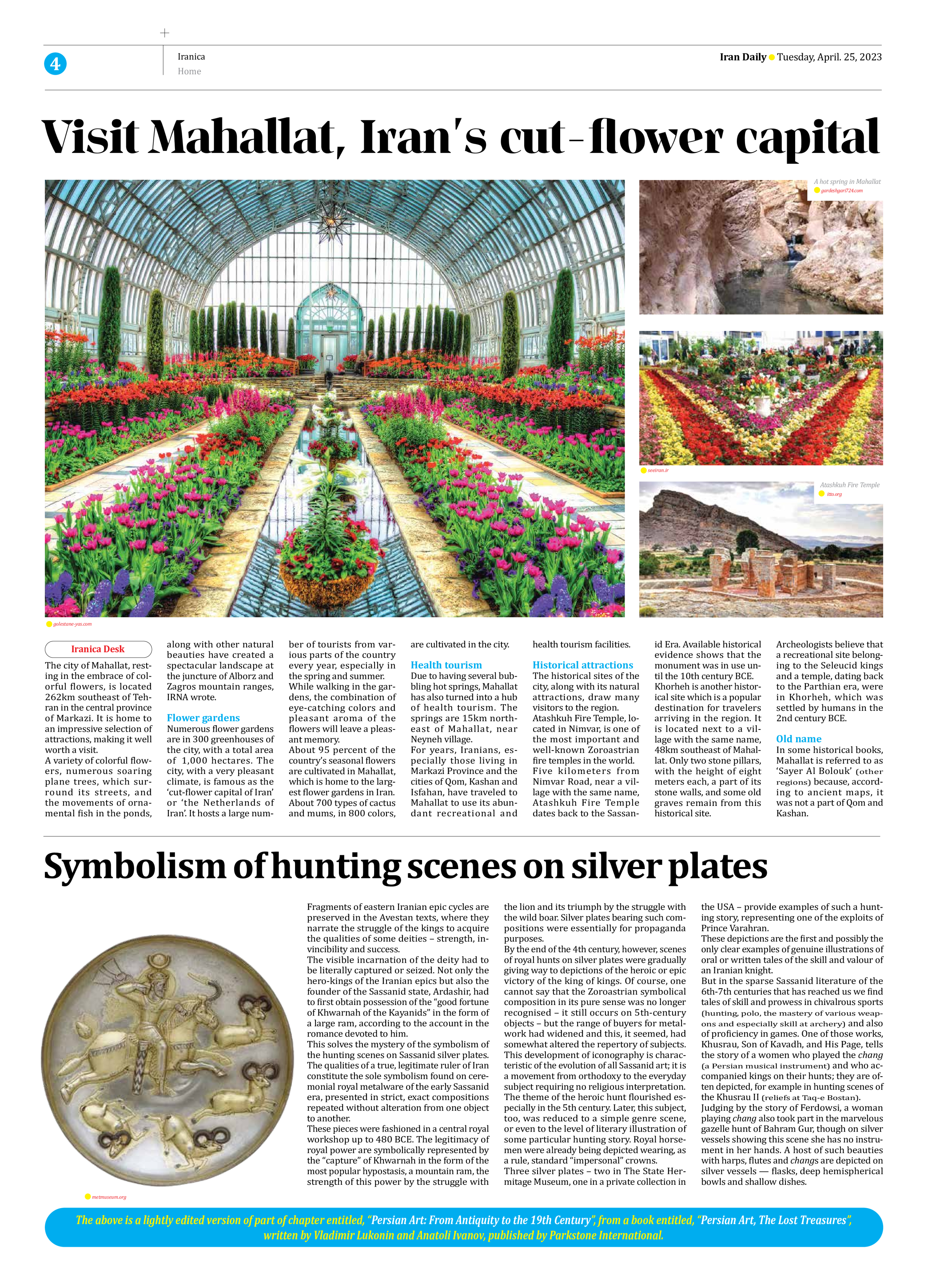
Symbolism of hunting scenes on silver plates
Fragments of eastern Iranian epic cycles are preserved in the Avestan texts, where they narrate the struggle of the kings to acquire the qualities of some deities – strength, invincibility and success.
The visible incarnation of the deity had to be literally captured or seized. Not only the hero-kings of the Iranian epics but also the founder of the Sassanid state, Ardashir, had to first obtain possession of the “good fortune of Khwarnah of the Kayanids” in the form of a large ram, according to the account in the romance devoted to him.
This solves the mystery of the symbolism of the hunting scenes on Sassanid silver plates. The qualities of a true, legitimate ruler of Iran constitute the sole symbolism found on ceremonial royal metalware of the early Sassanid era, presented in strict, exact compositions repeated without alteration from one object to another.
These pieces were fashioned in a central royal workshop up to 480 BCE. The legitimacy of royal power are symbolically represented by the “capture” of Khwarnah in the form of the most popular hypostasis, a mountain ram, the strength of this power by the struggle with the lion and its triumph by the struggle with the wild boar. Silver plates bearing such compositions were essentially for propaganda purposes.
By the end of the 4th century, however, scenes of royal hunts on silver plates were gradually giving way to depictions of the heroic or epic victory of the king of kings. Of course, one cannot say that the Zoroastrian symbolical composition in its pure sense was no longer recognised – it still occurs on 5th-century objects – but the range of buyers for metalwork had widened and this, it seemed, had somewhat altered the repertory of subjects. This development of iconography is characteristic of the evolution of all Sassanid art; it is a movement from orthodoxy to the everyday subject requiring no religious interpretation.
The theme of the heroic hunt flourished especially in the 5th century. Later, this subject, too, was reduced to a simple genre scene, or even to the level of literary illustration of some particular hunting story. Royal horsemen were already being depicted wearing, as a rule, standard “impersonal” crowns.
Three silver plates – two in The State Hermitage Museum, one in a private collection in the USA – provide examples of such a hunting story, representing one of the exploits of Prince Varahran.
These depictions are the first and possibly the only clear examples of genuine illustrations of oral or written tales of the skill and valour of an Iranian knight.
But in the sparse Sassanid literature of the 6th-7th centuries that has reached us we find tales of skill and prowess in chivalrous sports (hunting, polo, the mastery of various weapons and especially skill at archery) and also of proficiency in games. One of those works, Khusrau, Son of Kavadh, and His Page, tells the story of a women who played the chang (a Persian musical instrument) and who accompanied kings on their hunts; they are often depicted, for example in hunting scenes of the Khusrau II (reliefs at Taq-e Bostan).
Judging by the story of Ferdowsi, a woman playing chang also took part in the marvelous gazelle hunt of Bahram Gur, though on silver vessels showing this scene she has no instrument in her hands. A host of such beauties with harps, flutes and changs are depicted on silver vessels — flasks, deep hemispherical bowls and shallow dishes.
The above is a lightly edited version of part of chapter entitled, “Persian Art: From Antiquity to the 19th Century”, from a book entitled, “Persian Art, The Lost Treasures”, written by Vladimir Lukonin and Anatoli Ivanov, published by Parkstone International.







